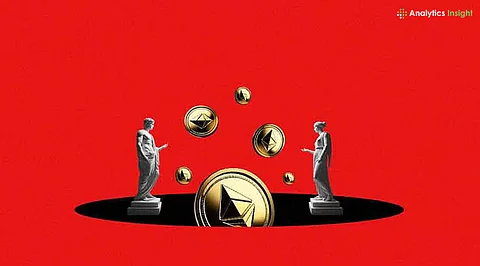

Ethereum hovers near $2,500 with eyes on the critical $3,200 level. On-chain data shows heavy accumulation, and technical indicators hint at bullish momentum as Ethereum recovers from its bout of low pricing and heads to higher support levels as a result of investor optimism towards cryptocurrencies.
Ethereum (ETH) is trading around $2,500, having dipped slightly in the last 24 hours. Despite the short-term decline of around 2%, ETH remains one of the most closely watched cryptocurrencies in the market. With recent developments in both technical indicators and market fundamentals, Ethereum may be preparing for a major price breakout. Investors and analysts are keeping a close eye on one important resistance level that could determine the next big move.
Ethereum has been moving within a steady upward channel for the past several weeks. This type of pattern is often called a "parallel channel", where the price bounces between two trend lines—one acting as support and the other as resistance. ETH has been respecting these lines, suggesting a continuation of this trend unless broken.
Currently, the most crucial resistance level for Ethereum is around $3,200. This is the level ETH must break above to confirm a bullish breakout. On the downside, the key support to watch is $2,900. If Ethereum fails to hold above this level, it may drop further, possibly to the $2,600 or $2,400 zones.
Technical indicators give valuable clues about what the price might do next.
The Relative Strength Index (RSI) is approaching the 70 mark, which usually suggests that the asset is becoming overbought. However, this also means strong buying momentum exists, and a breakout could follow if the momentum continues.
The Moving Average Convergence Divergence (MACD) is showing positive signs. It is currently above its signal line, and the histogram bars are green, indicating bullish momentum.
If Ethereum manages to break above $3,200 with strong volume and positive indicators, it could potentially rally toward $3,500, and then eventually $4,000, which is a psychologically important level.
On-chain data, which analyzes activity directly on the Ethereum blockchain, shows a pattern of accumulation. This means that large investors—often called whales—are buying and holding ETH, rather than selling.
One important metric called the MVRV Z-Score (Market Value to Realized Value) is at its lowest in over 17 months. This usually means ETH is undervalued compared to its historical performance. In past cycles, such low values have been followed by strong upward moves.
Another positive signal is that the amount of ETH held on crypto exchanges is declining. When ETH is moved off exchanges into wallets, it usually means the holder intends to keep it for the long term, which reduces the supply available for trading and can push the price up.
Big players in the market are paying attention to Ethereum. Recently, large wallets have added millions of dollars worth of ETH. One notable example includes a wallet linked to a well-known crypto entrepreneur that reportedly added over 100,000 ETH, worth nearly $300 million.
This kind of activity often signals strong confidence in the future price of Ethereum. It also builds buying pressure, as fewer coins remain in circulation.
Moreover, upcoming events like the Bitcoin halving, expected in 2028, often create bullish momentum across the entire crypto market. Historically, these events have led to increased investor interest in major altcoins like Ethereum.
Two major scenarios could play out in the short term for Ethereum:
Bullish Breakout Scenario:
ETH breaks above the $3,200 resistance level.
A rally follows toward $3,500 and potentially even $4,000.
Strong volume supports the move, and technical indicators stay positive.
On-chain data continues to show accumulation and reduced exchange supply.
Bearish Rejection Scenario:
ETH fails to break $3,200 and falls below $2,900 support.
Selling pressure increases, and the price drops toward $2,600 or even $2,400.
RSI turns downward, and MACD signals a bearish trend.
Market sentiment weakens, and long-term holders reduce their positions.
The outcome will depend on how much buying power enters the market and whether the macroeconomic environment continues to support risk-on investments like crypto.
The excitement around a potential ETH breakout isn't just about technical patterns. Several recent upgrades and developments in the Ethereum ecosystem are also influencing price expectations:
Ethereum’s Petra upgrade, which was completed recently, introduced changes that help reduce the number of ETH tokens in circulation, creating a deflationary effect over time. Fewer tokens can push prices higher if demand remains strong.
The rise of decentralized finance (DeFi) and non-fungible tokens (NFTs) continues to rely heavily on Ethereum's blockchain, further strengthening its real-world utility and long-term demand.
Institutional adoption is accelerating, with more funds, ETFs, and financial platforms offering exposure to Ethereum.
Ethereum’s price is at a key turning point. The current trading zone between $2,900 and $3,200 will likely determine the next big move. If ETH can break and stay above $3,200, it could start a new rally toward $3,500 and beyond. On the other hand, a drop below key support levels may lead to a temporary correction.
Technical indicators, on-chain metrics, and institutional activity are all suggesting that Ethereum is building strength for a breakout. However, as with all cryptocurrencies, price movements can be volatile. Watching these crucial levels in the coming weeks will be essential to understanding where Ethereum is headed next.
